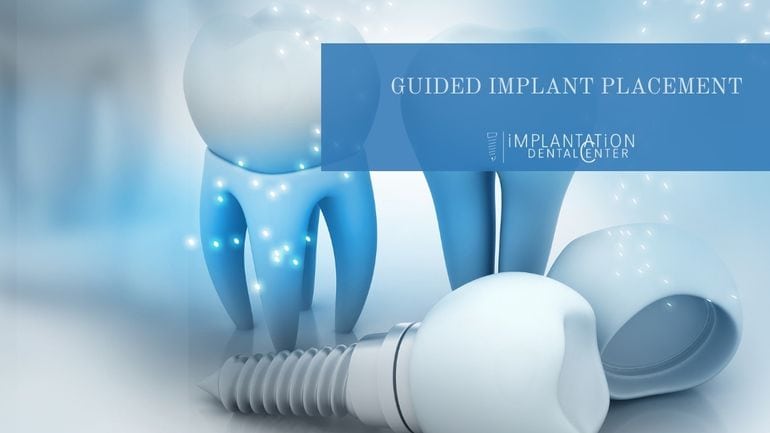Guided implant placement is a technique used by dental professionals to plan and place dental implants using computer-aided design and manufacturing (CAD/CAM) technology. Here are some of the benefits of guided implant placement:
- Precision and Accuracy: Guided implant placement uses advanced software and imaging techniques to create a detailed, three-dimensional map of the patient’s mouth. This helps the dentist to plan and place the implants with a high level of precision and accuracy, reducing the risk of errors and complications.
- Reduced Treatment Time: Guided implant placement allows for faster and more efficient treatment as it eliminates the need for multiple visits to the dentist. The digital planning process allows the dentist to visualize the entire implant procedure and accurately place the implant in a single visit.
- Improved Patient Comfort: Guided implant placement is less invasive and less traumatic for patients as it requires smaller incisions and less drilling. This results in less pain, swelling, and discomfort during and after the procedure.
- Reduced Risk of Complications: Guided implant placement reduces the risk of complications such as implant failure, nerve damage, and gum recession. The precise placement of the implant ensures that it is positioned correctly, minimizing the risk of damage to surrounding teeth, nerves, and tissues.
- Improved Aesthetics: Guided implant placement can improve the aesthetics of the patient’s smile by ensuring that the implant is placed in the optimal position and angle to match the surrounding teeth. This results in a more natural-looking and aesthetically pleasing smile.
Guided implant placement can improve the functionality of the patient’s mouth by providing a secure and stable foundation for prosthetics such as dentures or bridges. This helps to restore chewing efficiency and make it easier to speak and eat.
Overall, guided implant placement is an advanced technique that provides many benefits for patients seeking dental implants. It reduces treatment time, improves patient comfort, reduces the risk of complications, enhances aesthetics and functionality, and provides greater accuracy and precision compared to traditional methods. As a result, more and more dental professionals are now turning to guided implant placement for their patients’ needs.
As the use of guided implant placement continues to grow, so does the role that computers play in dental technology. Computers are helping to make dentistry more efficient and accurate, by providing real-time imaging data that can be used for detailed analysis and planning. This allows for more precise measurements and guidance for implant placements, as well as improved visualization of the patient’s mouth. Computer-aided design (CAD) software is also being used to create prosthetic teeth or bridges that are customized and tailored to the patient’s unique needs. In addition, 3D printing technology is being used to fabricate custom abutments that can be used in conjunction with guided implant placement.
The use of computer technology has also allowed for digital workflows that streamline procedures and reduce time spent in appointments. For example, preoperative scans of the patient’s mouth can be used by CAD/CAM software to create a treatment plan before they come into the office. Digital records can then be sent directly from the dentist’s office to a dental laboratory without any tedious paperwork or manual processing. Additionally, digital models created with 3D printing can give dentists a better understanding of how an implant will fit into a patient’s jawbone before it is placed, reducing guesswork and risk associated with surgical procedures.
In conclusion, guided implant placement is growing in popularity due to its precision and accuracy when compared to traditional methods. It is becoming increasingly easy for dental professionals to take advantage of computer technology when planning and placing implants, whether it be through preoperative scans or 3D printing custom abutments. With these tools at their disposal, dentists are able to provide their patients with high quality care while minimizing risks associated with surgical procedures.
Call our office and schedule your appointment. Dr. Hervas is a board certified prosthodontics with the most up today techniques in guided and CAD/CAM dentistry. He founded STL Digital Dental Lab for this purpose.



